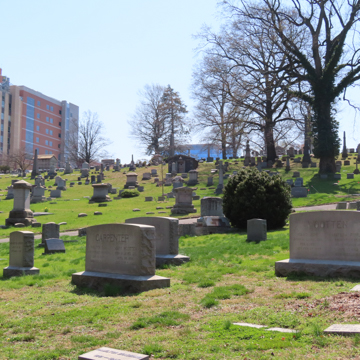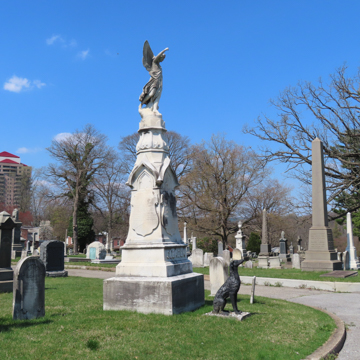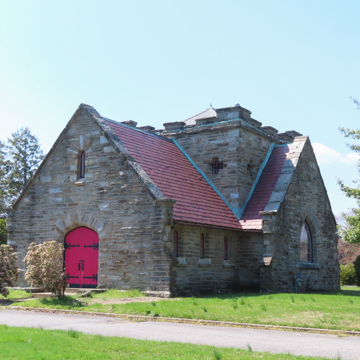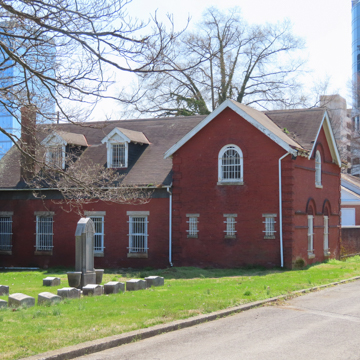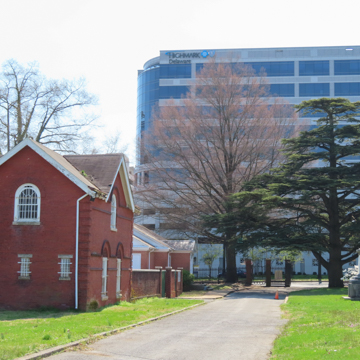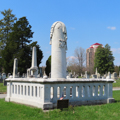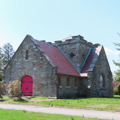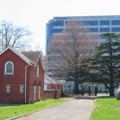The rural cemetery movement left few examples in Delaware. Behind this cemetery's entrance gates is a rare Cedar of Lebanon tree, brought here by botanist James Canby c. 1850. To the right is the late-nineteenth-century caretaker's office. A straight avenue leads past the Gothic Revival chapel of fieldstone, the last work of Dallett, whose casket would lie there four years later. A cast-iron dog guarding the Néo-Grec Cleaden monument (c. 1873) recalls memoirist Henry Seidel Canby's recollections of the many such dogs beside doorsteps in the Wilmington of his youth. On the right side of the cemetery is the white marble, Egyptian-style obelisk dedicated to Alexander Porter, who drowned in a shipwreck off Africa in 1827 (brought from the Old First Presbyterian burying ground; see WL58); the Néo-Grec Robinson monument with small, polished red columns (c. 1878); and the Adams mausoleum, also Néo-Grec, with a fine gate (1887). On the left side are the matching, Gothic Revival Harlan and Gause mausolea (c. 1880). An additional graveyard was located just east of the cemetery but was razed for a parking lot in the 1950s and forgotten. Hospital expansion on the site in the 1990s led to its surprising rediscovery and a controversial archaeological excavation in which hundreds of bodies—many of them Irish paupers—were removed for reinterment elsewhere.
You are here
Wilmington and Brandywine Cemetery
If SAH Archipedia has been useful to you, please consider supporting it.
SAH Archipedia tells the story of the United States through its buildings, landscapes, and cities. This freely available resource empowers the public with authoritative knowledge that deepens their understanding and appreciation of the built environment. But the Society of Architectural Historians, which created SAH Archipedia with University of Virginia Press, needs your support to maintain the high-caliber research, writing, photography, cartography, editing, design, and programming that make SAH Archipedia a trusted online resource available to all who value the history of place, heritage tourism, and learning.







